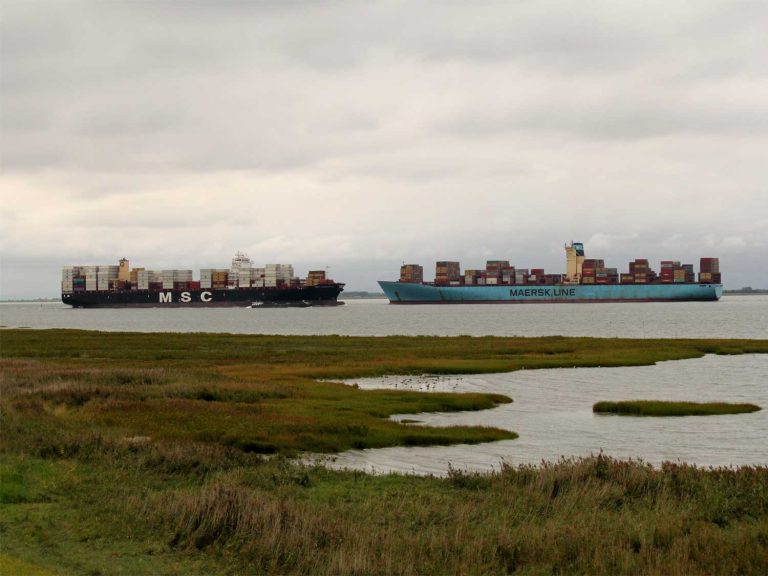
Date:
Gemini Cooperation’s bid to transform reliability
As the Gemini Cooperation officially launches, its promise of 90%-plus schedule reliability through a hub-and-spoke network is under intense scrutiny.
Maersk and Hapag-Lloyd, the two partners in the venture, aim to address persistent reliability issues in container shipping, where schedule adherence has remained stubbornly low, fluctuating between 50% and 55% throughout 2024.
Gemini’s hub-and-spoke model, which involves central hubs facilitating feeder services to final destinations, is designed to optimise transit efficiency. By consolidating mainline services at designated hubs, the carriers seek to mitigate congestion-related delays that can plague conventional port-to-port operations.
With 340 vessels and a combined capacity of 3.7 million TEUs, the Gemini network will eventually offer 57 interconnected services – 29 mainline routes and 28 regional shuttles – once fully phased in by mid-year.
Overcoming historical challenges
Achieving the ambitious 90% schedule reliability target remains a formidable challenge, given the industry’s historical struggles with port congestion and operational disruptions.
While Maersk and Hapag-Lloyd have consistently outperformed the industry average, their own reliability in 2024 remained below 60%. By controlling key transshipment hubs Gemini aims to establish a more predictable flow of goods.
External risks, however, remain beyond the carriers’ control. Congestion at key ports in China, including Shanghai and Ningbo, has intensified due to demand outpacing capacity growth. The ability of the Gemini model to navigate such disruptions will be crucial in determining its success.
A question of market adoption
Beyond operational feasibility, the long-term viability of Gemini hinges on whether shippers are willing to prioritise schedule reliability over cost savings. The model’s success will depend on whether customers are prepared to pay a premium for consistency, particularly in an uncertain 2025 market. While some shippers may value reduced inventory costs enabled by greater reliability, past efforts to introduce premium services struggled due to market fragmentation and price sensitivity.
With the majority of shippers valuing end-to-end reliability rather than just punctuality between hubs, the challenge for Gemini will be to demonstrate that its model can deliver comprehensive benefits across the entire supply chain.
An industry-first experiment
With competing alliances, Ocean Alliance, Premier Alliance and MSC continuing to favour traditional port-to-port networks, Gemini’s decision to embrace the hub-and-spoke model sets it apart. For ‘Ocean’ and ‘Premier’ it is more or less ‘business as usual’, with their service structure based upon the current setups.
In particular ‘Ocean’s’ network remains largely unchanged, except for the re-launch of a seventh Far East to Europe service. Further to this, the alliance will add the South Chinese port of Yang- pu, on Hainan Island, to two of its Asia to North America loops.
‘Premier’ mainly maintains the former THEA services and it will compensate the departure of Hapag-Lloyd by slot agreements with MSC on Far East to Europe services. Operationally, the partners will keep full control of ‘their’ loops, while retaining an existing Vessel Sharing Agreement with Wan Hai Lines in the Transpacific trade. ‘Premier’s’ largest member, ONE, will also continue a Transatlantic Vessel Sharing Agreement with the members of ‘Ocean’.
With the network still in its early stages, industry observers remain divided on whether Gemini can deliver on its promises. Yet, if the venture achieves its ambitious targets, it could compel competitors to rethink their approach. The coming months will provide the first indications of whether this bold experiment will reshape global container shipping or simply become another ambitious but short-lived attempt at reform.
Metro negotiates rates and volume agreements with a broad portfolio of carriers, including MSC and the three major alliances, ensuring shippers have access to the widest range of service options, port pairings, and competitive rates.
Our tailored ocean freight solutions reflect each customer’s unique requirements and expectations, delivering optimised logistics strategies. For expert guidance EMAIL Andy Smith, Managing Director, to review your situation and find the best solution for your supply chain.
